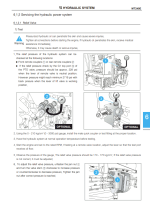interesting about leaving one in the system, you can know when you are approaching the limit, never though about that.
To the point about having multiple gauges in the system, that brings me back to my original question, which I still don't quite get. Assuming the gauge is dead headed, i.e. the end of the line, is the pressure the same throughout the system, so as long as that valve was actuated, the pressure should read the same whether it was measured at the loader valve, rear remote valve, or 3rd function valve?

